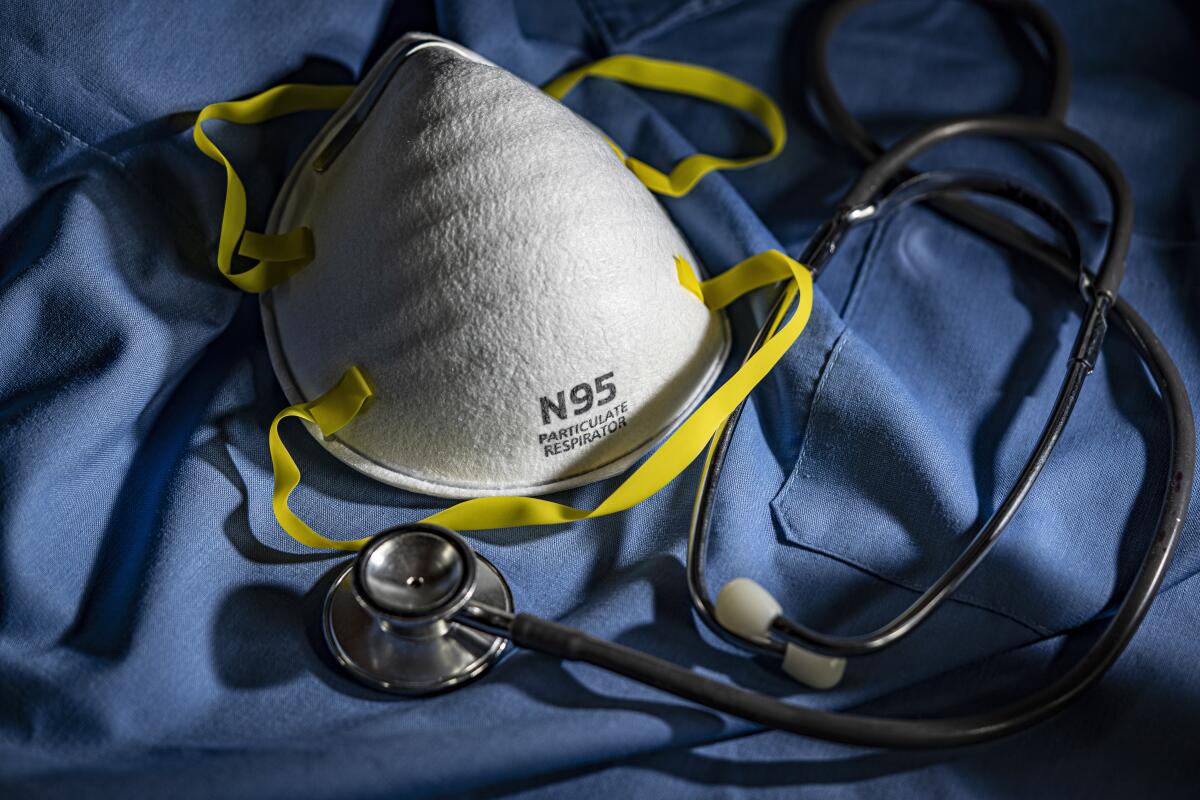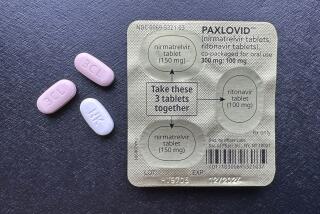Op-Ed: We need a national strategy to help health workers recover from the stress of the pandemic

COVID-19 has hit our already burdened healthcare workforce like a sledgehammer. More than a year into the pandemic, an immediate, full-scale effort to support healthcare workers and help them stay in the workforce is necessary if the U.S. healthcare system is to survive.
Before the onset of COVID-19, one-third to one-half of health professionals were experiencing burnout and distress — a rate higher than what’s seen in other demanding fields such as law and academia. Burnout can lead to anxiety, depression, even suicide. It can affect health workers’ job performance and propel them to leave the workforce. Ultimately, high rates of burnout may compromise the function of the health system and threaten access to high-quality care.
That is why we need a national strategy, not only to help healthcare workers recover from the pandemic, but also to mitigate preexisting drivers of burnout. An essential first step is a tracking system to monitor their physical and mental health.
This system would be managed by the federal government and establish standards for what health data should be routinely collected and reported by employers. Ideally, this information would be aggregated in an online database, where researchers, policymakers and the public could view national and regional trends in health workers’ well-being. Negative trends would signal the need for intervention. Crucially, this system would direct the commitment of federal funds to provide long-term physical and mental healthcare for affected individuals.
Anecdotes and statistics demonstrate the need for such a system.
Last year, a physician reported for duty at a Houston hospital 268 days in a row. The Mayo Clinic reported in November that more than 1,000 of its staff members were on leave because of infection, exposure or caregiving responsibilities. And to cope with the onslaught of COVID-19 patients, California relaxed nurse-to-patient ratios in telemetry units that electronically monitor critically ill patients, increasing workloads by as much as 50%.
As many as 20% to 25% of healthcare workers in hard-hit areas, experts say, are likely to develop disorders such as anxiety, depression or post-traumatic stress.
Front-line workers have faced shortages of essential supplies such as N95 masks, ventilators and cardiac monitors. In the many months before they could get vaccinated, many worried about getting COVID-19 and transmitting the virus to loved ones. Tens of thousands of healthcare workers did become ill, and more than 2,900 died of COVID-19 last year, according to one analysis.
Of course, patients are also dying, more than 517,000 so far. Since hospitals have restricted visitation during the pandemic, many doctors and nurses have been forced into an emotional and heartbreaking role — offering comfort, facilitating anguished goodbyes via FaceTime and bearing lone witness to a patient’s final moments.
The scars of these experiences will be deep, and they are bound to exacerbate burnout. There are already worrying signs. In a survey of more than 12,000 U.S. physicians published in January, only 49% reported being happy at work, compared with 69% before the pandemic.
The problem goes beyond physicians. A survey conducted in the summer revealed a concerning trend across all health professionals, with 76% reporting burnout and exhaustion amid the pandemic. Nurses appeared particularly vulnerable in this study, reporting higher levels of COVID-19 exposure risk, greater exhaustion and less access to emotional support than other members of the healthcare team.
We know that the health consequences of disasters and traumatic events can last for years. Yet disasters of the past have largely been concentrated in terms of their duration and geography — whether that means a powerful hurricane, a mass shooting or a building collapse. As resources flow in from across the nation, providing support for health workers and other first responders after comparatively isolated incidents is relatively straightforward, though far from easy.
There is no cavalry riding to the rescue after COVID-19. The pandemic has been the largest, and the longest, strain on the well-being of U.S. health workers in modern history. The solution must match the scale of the challenge.
In order to allocate adequate resources for the necessary long-term support, we need to fully understand the scope of the need. And consistent surveillance will tell us whether well-being is improving in response to interventions. We must have a reliable barometer for the health of our healthcare workforce.
There is ample precedent for such a system. The National Institute for Occupational Safety and Health, an agency of the Centers for Disease Control and Prevention, tracks the presence of health hazards and incidence of injuries and fatalities in the workplace. These data make it possible for affected individuals to access federal resources and compensation.
NIOSH is home to the World Trade Center Health Program, perhaps the most instructive example for a surveillance system to track the well-being of health workers. It provides long-term medical monitoring and treatment for first responders and survivors of the Sept. 11 terrorist attacks and publishes data annually about member demographics and health conditions. The program was recently reauthorized until 2090.
The $1.9-trillion pandemic relief bill under consideration by the Senate contains some provisions for immediate support of the healthcare workforce. But short-term support, though welcome, will not be enough. The federal government must commit to a long-term program, akin to the World Trade Center program, which provides ongoing health surveillance for all health professionals as well as care for those who experience pandemic-related health consequences.
Helping front-line healthcare workers, who have given so much of themselves to care for others, is the right thing to do. As we prepare to rebuild our society in the wake of COVID-19, it would also be a strategic investment in what has become a weakened national resource.
Dr. Victor J. Dzau is president of the National Academy of Medicine and chair of its Action Collaborative on Clinician Well-Being and Resilience.
More to Read
A cure for the common opinion
Get thought-provoking perspectives with our weekly newsletter.
You may occasionally receive promotional content from the Los Angeles Times.










